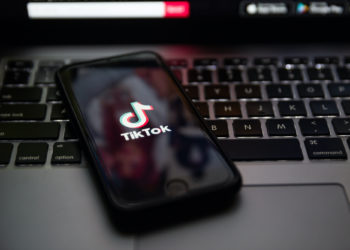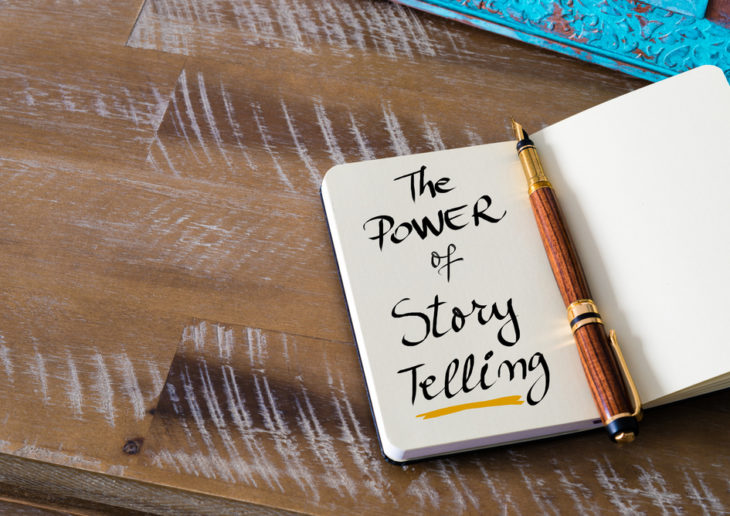
By Wyatt Otto, Content Manager With TikTok growing to become the most popular platform for traditional college students (age 18-22), more colleges are joining the platform to better connect to… Read More – So Your College is on TikTok, Now What?
Blog February 27, 2019

There’s one thing that all great brands do: they tell great stories.
Why is this important? Because, on a basic level, stories create emotion, and as anyone in marketing knows, emotions drive engagement and sales.
As Mark Truby, VP of Global Communications for Ford Motor Company, says, “A good story makes you feel something universal. They [the customers] want to grasp you values and commitment to excellence’ be inspired and intrigued. Storytelling is the most powerful way to convey these ideas.”
Here at Interact, we’ve been telling brand stories for community colleges for more than 20 years and we’ve learned a couple things about how to do it well. In this post, we’re going to look at two basic approaches to telling stories on YouTube.
Why YouTube?

To begin, with more than 1 billion views per day and its status as the second most used search engine in the world, YouTube is one of the most effective and powerful ways to communicate your brand and tell your college’s story. According to Interact’s Media Preferences survey (an annual survey of the media viewing habits of community college students), YouTube is the most used social platform across ALL community college demographics.
(If you still need to be convinced, check out this article about why your college needs to be using YouTube.)
Two Basic Approaches to Telling Stories on YouTube.
The first approach is fictional narrative. The University of Phoenix does an excellent job of this in this video, which as of the time of this writing, has more than 11 million views. If you haven’t seen it, it’s an excellent example of how to use stories to sell an idea.
What you might not realize is that behind the stories emotional core are the same basic storytelling techniques that all stories use.
The first part of the ad sets up a problem that the protagonist has to solve. The second sees the problem get worse as the protagonist fails to fix whatever is “broken.” Finally, the third act climaxes as the protagonist confronts the problem and solves it.
The key to this climax, of course, is that the solution to the problem is the education that the school is selling. Without saying it directly, Phoenix has told a story that dramatizes its mission to provide an education that solves the problem of unemployment, underemployment, and/or debt. Not a bad story to tell if you’re a college (sometimes, the enemy’s tactics are to be studied, so we can adapt them in our own battle plan).
Using Authentic Narration
Another highly effective way to tell your college’s story, and one that doesn’t require an advertising budget that is larger than Tide and Cheerios combined, is to leverage the success of your own students.
We call this “authentic narration” and have been using it to great success for many years. Not only is it a much more cost-effective alternative for budget-strapped community colleges, it also has the advantage of being entirely authentic.
On an emotional level, these authentic narrations achieve many things:

Does your college want to be seen as approachable and accepting?
Does your college want to be seen as accessible and authentic?
Does your college want to be seen as credible?
Does your college want to be seen as student-focused?
Does your college want to be seen as effective?
Our YouTube Statistics
To give you an idea of how effective these have been, here are a few links and bullet points.
To give you some context, the average completed view rate, according to Google Trends, is 15%, with average costs per view running between 10 and 15 cents.
Yeah, these campaigns killed it. And that’s good for a lot of reasons… but mostly it’s good because what we do is important.
Education changes lives. In fact, it can change generations of lives.
That’s why it’s so important that you’re successful, and that’s why Interact is so committed to the work that we and you do.
When you’re ready to start integrating video into your college’s storytelling strategy, or just need the support of an agency that knows what it’s like to herd cats, give us a call. We believe in what you’re doing.

By Wyatt Otto, Content Manager With TikTok growing to become the most popular platform for traditional college students (age 18-22), more colleges are joining the platform to better connect to… Read More – So Your College is on TikTok, Now What?

We’re all familiar with she/her and he/him pronouns, but there’s a third set of pronouns that we need to become more familiar with, and that’s singular they/them pronouns.

In an interview with Paula Di Dio, Ph.D. in Latin American literature and cultural studies and senior director of communications & research strategist at Interact, we break down how best to communicate with Latino and Hispanic students.
Read More – Writing and Marketing to Latino and Hispanic Students